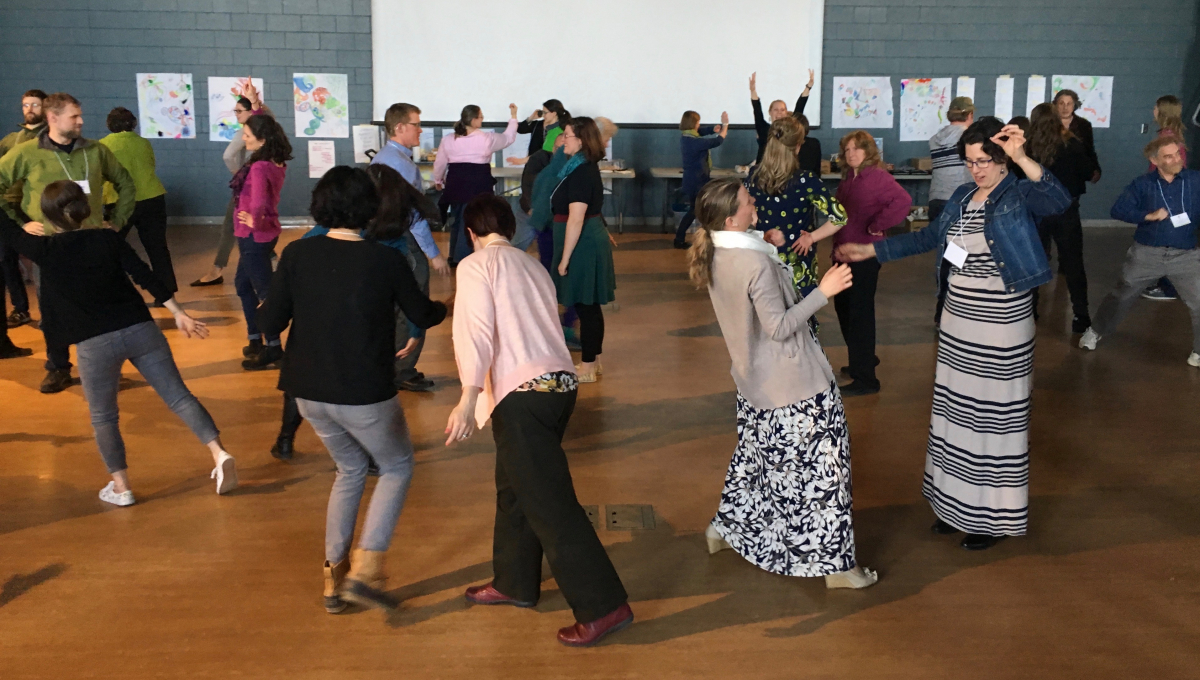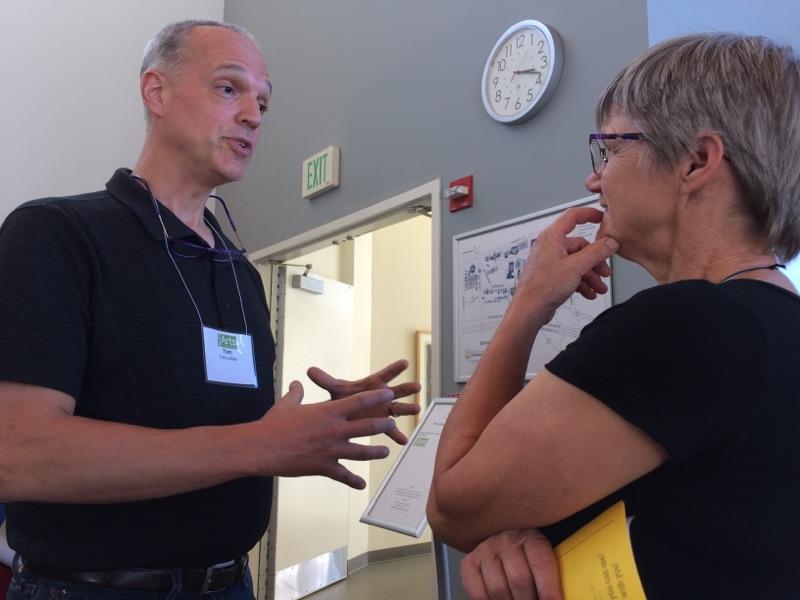Innovation in Education
Posted by May 08, 2019

Ms. Argy Nestor
So many terms are tossed around each day in the world of education: personalized learning, student-centered learning, innovation, creativity, proficiency-based learning, 21st century skills, mass-customized learning, competency based education, and on and on. I’ve been thinking more about “innovation in education” lately. It seems that innovation can be a hiccup for many educators. We know that teachers are responsible for so much more today than even five years ago.
According to the Merriam-Webster dictionary, the word innovation means:
- the introduction of something new
- a new idea, method, or device
Synonyms for innovation: brainchild, coinage, concoction, contrivance, creation, invention, wrinkle.
In this century and the focus on the global economy, innovation is a critical component. I’ve been thinking more in recent months about what we’ve been doing in education to foster innovation. Every time, my thoughts turn to wonderings and questions including:
- What are we doing in arts education to support and/or teach innovation?
- Are we providing the opportunity and encouraging learners to create innovative works of art?
- What is the role and responsibility of arts education and arts educators when it comes to innovation?
- In this fast-paced world, how does an educator address the needs of every single learner today?
- For teachers: Would you want to be a learner in one of your classes?
Poetry Out Loud
 For the last six years I’ve been responsible for the Maine Poetry Out Loud (POL) program. At the beginning I understood little about reciting poetry, but now I find myself an armchair expert (yes, enough to be dangerous and/or foolish). Part of this experience has been watching countless hours of high school students reciting poetry at the regional, state, and national levels. The students are required to select three poems from the online POL anthology (which contains over 900 poems) AND memorize them to perform. One must be 25 lines or fewer, and one must be written before the 20th century. Imagine the challenge of simply selecting three poems from over 900?!
For the last six years I’ve been responsible for the Maine Poetry Out Loud (POL) program. At the beginning I understood little about reciting poetry, but now I find myself an armchair expert (yes, enough to be dangerous and/or foolish). Part of this experience has been watching countless hours of high school students reciting poetry at the regional, state, and national levels. The students are required to select three poems from the online POL anthology (which contains over 900 poems) AND memorize them to perform. One must be 25 lines or fewer, and one must be written before the 20th century. Imagine the challenge of simply selecting three poems from over 900?!
If any of you have watched high school students recite poetry, over a period of time you come to understand that the students have all but crawled inside their poems and acquired a deep understanding of the poem. With this practice comes a certain style. The audience may hear the same poem three or four times, recited by as many different students—and each performance is totally different.
You may be wondering, what the heck does this have to do with “innovation”? Well, I invite you to think about the first definition from Merriam-Webster: the introduction of something new. Over the years after hearing multiple styles of poetry performances it makes me think about how much the program has evolved, not because of any structural differences but, in fact, how learners have interpreted the poems they select to recite. Thanks to the thoughtfulness of teachers and students digging deeper within themselves, the quality of the performances each year is more spectacular and certainly more innovative!
Maine Arts Leadership Initiative
I’ve been sorting through old files lately and reflecting on the work of the Maine Arts Leadership Initiative (MALI) from the last eight years. MALI’s mission is: Committed to the development of Teacher Leaders to ensure deep understanding and meaningful implementation of high quality teaching, learning, and assessment in the Arts for all students.

MALI presently has over 100 Teaching Artist Leaders and PK-12 Teacher Leaders. These educators come together each summer for a 3-day institute, take on a year-long challenge, use a “Logic Model,” and create a plan to implement solving the challenge. In addition, they share their work in multiple formats: through writing, teacher and student resources, and verbal and multi-media presentations. Students are at the heart of their ideas and they continuously reflect on making their arts classroom (in and out of traditional schools) places where students can excel and experience success in and through the arts. To carry out their ideas, educators need to think differently. They are finding success in student-centered classrooms by personalizing education for each learner, whether they teach very young children and/or adults.

Teaching Artists Leaders and PK-12 Teacher Leaders are developing and using new ideas and methods to provide meaningful learning opportunities as their students’ needs and the needs of the world have shifted.
HundrED
Last November I had the opportunity to travel to Helsinki for the HundrED Summit on Education. The organization believes that “the purpose of education is to help every child flourish, no matter what happens in life. In a fast-changing world, education must adapt to keep up. The world is full of inspiring innovations, but they can struggle to spread beyond their immediate environments. That's why HundrED discovers, researches, and shares impactful and scalable K12 innovations with the world, for free.”
HundrED is an amazing organization that is seeking to find inspiring educators from all parts of the world so they can share their innovative ideas. They are all about innovation, and in the process, they are improving education. MALI is a grassroots initiative that has been successful because educators are empowered to explore their ideas and share them with others. HundrED is working on the same premise, working with teachers across the world.
And, their latest goal is to engage young people and encourage them to use their voices to address the needs of students in a global economy. HundrED has engaged a young person from Mexico, Jordy Angel Coldwell, to communicate about the importance of including and empowering students in their education. Jordy’s introduction on the HundrED page:
My name is Jordy from Mexico and I am a student. That's it. Just a student. A student who believes there is so much more to education than we are currently receiving. I encourage the idea of students being the center of their own education and having a say in every part about it. Education is for the students, so students should have the biggest voice when it comes to deciding what is the best for us students.
You can hear Jordy address the key issues in education today in three different videos. Jordy’s important role is the director of Student’s Voice at HundrED, encouraging students to voice their opinions and to start thinking about their education. She is inviting students to apply to be student ambassadors with HundrED. If you’re wondering about innovation through the lens of a young person, Jordy makes it clear.
In the book The Innovator’s Mindset by George Couros, I am reminded of how important it is to address innovation through educational leaders.
“An innovative leader should try to create new ideas, but it is more important that they create a culture of innovation. We (in education) often talk about empowering people and then getting out of their way, but what is often missed in the process is removing some of those barriers that they will encounter along the way. This is why it is so important to spend time in classrooms, see what teaching and learning looks like, and then help to create a better tomorrow for our students and educators. Again though, at the heart of innovation are people, not stuff. If we always keep that truth at the forefront, we are more likely to create an innovative culture.”
As I continue pondering the questions that I started this post with, I always come back to the same place. If we believe that the arts are essential to the full development of every learner, then we MUST have innovation at the heart of excellent teaching and student learning. If we use this lens, the world will continue to get well-prepared young people.





